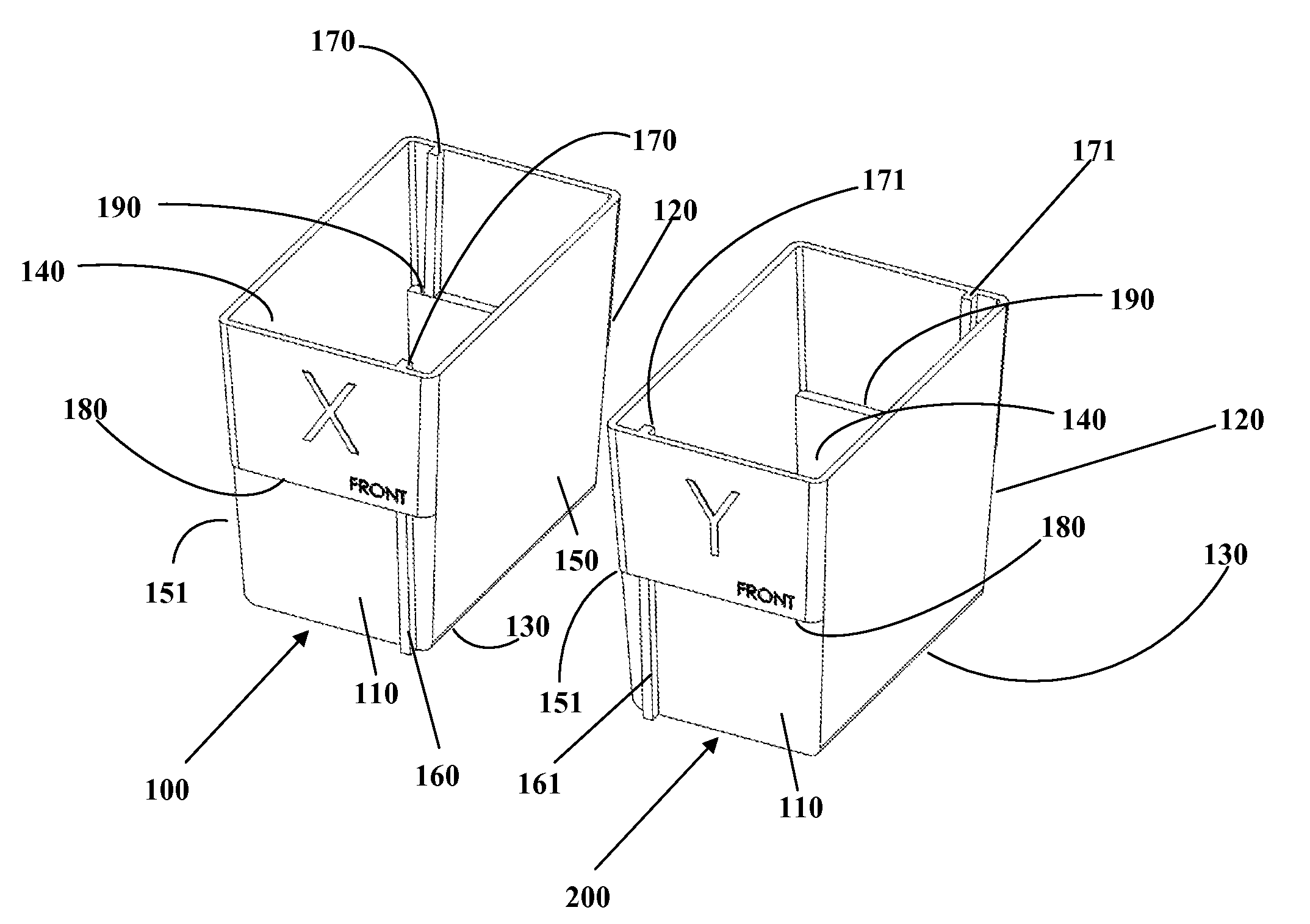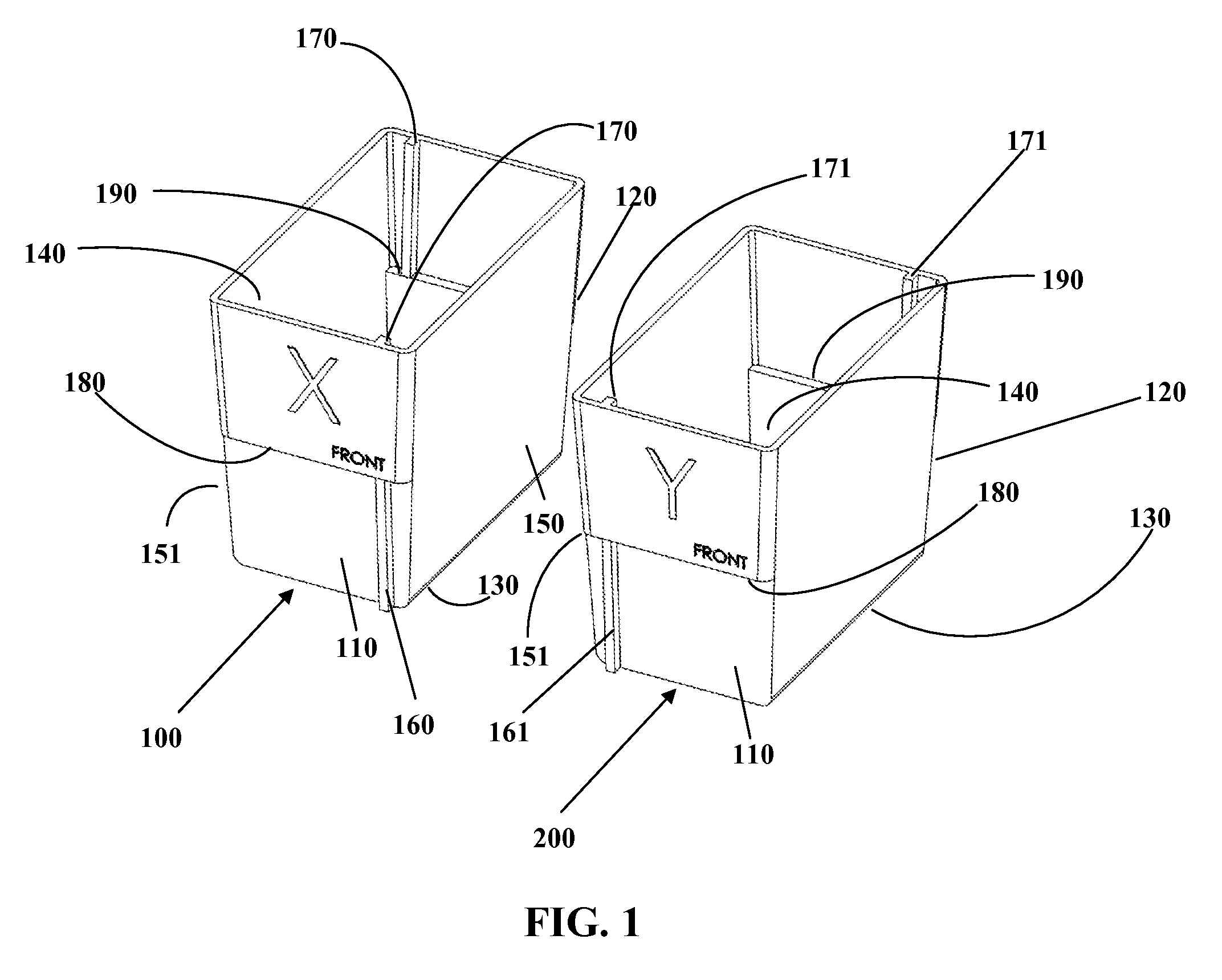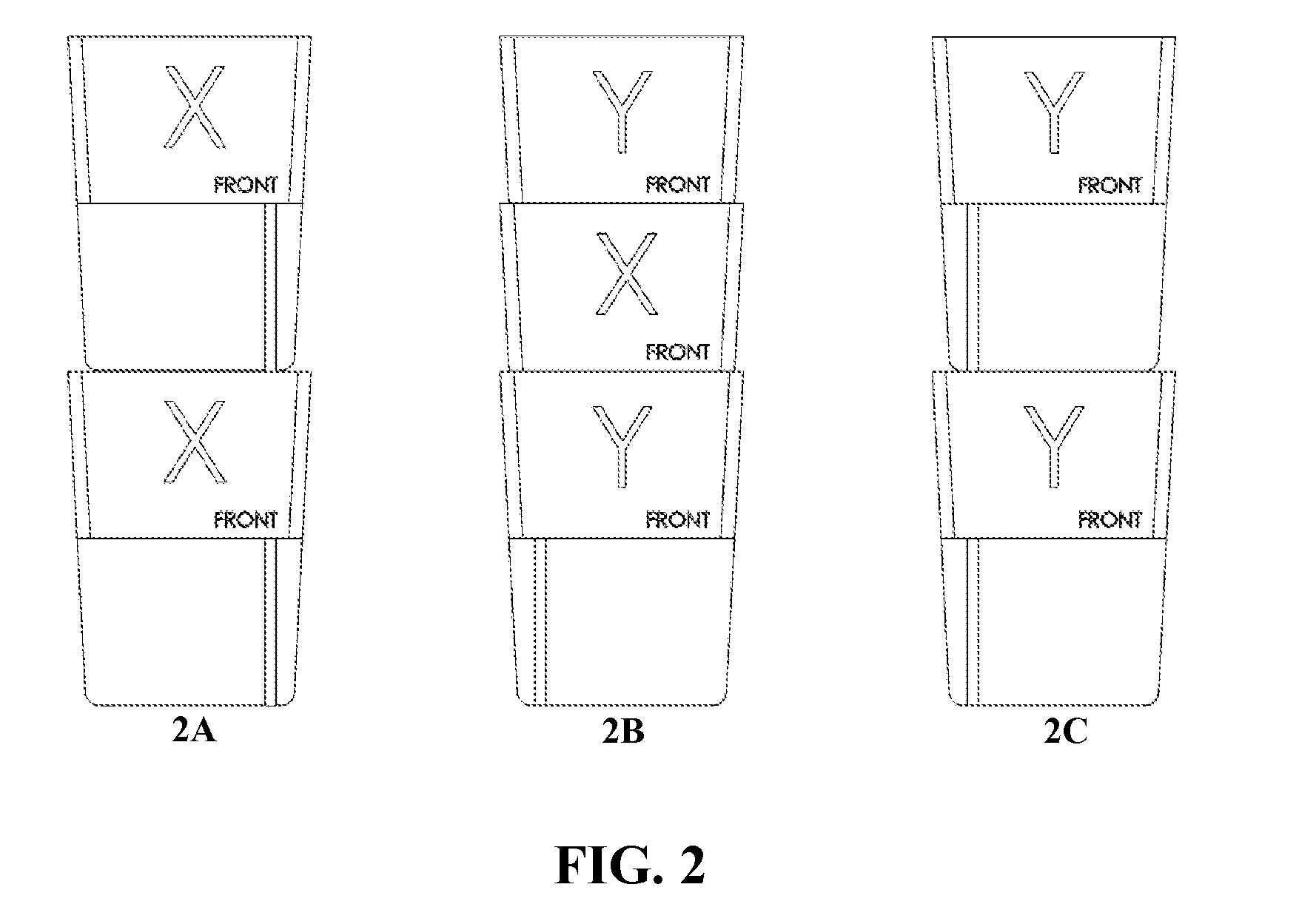Stackable electrical box
a technology of electrical boxes and boxes, applied in the field of electrical boxes, can solve the problems of difficult storage of electrical boxes in groups, and achieve the effect of reducing the amount of space required
- Summary
- Abstract
- Description
- Claims
- Application Information
AI Technical Summary
Benefits of technology
Problems solved by technology
Method used
Image
Examples
Embodiment Construction
[0024]This disclosure, its aspects and implementations, are not limited to the specific components or assembly procedures disclosed herein. Many additional components and assembly procedures known in the art consistent with the intended electrical boxes and / or assembly procedures for electrical boxes may be used and will become apparent for use with particular implementations from this disclosure. Accordingly, for example, although particular implementations are disclosed, such implementations and implementing components may comprise any shape, size, style, type, model, version, measurement, concentration, material, quantity, and / or the like as is known in the art for such electrical boxes and implementing components, consistent with the intended operation and purpose of electrical boxes. As used herein, “electrical boxes” is intended to specifically refer to the types of electrical boxes that are mounted within a wall structure and to which small electrical devices such as electric...
PUM
 Login to View More
Login to View More Abstract
Description
Claims
Application Information
 Login to View More
Login to View More - R&D
- Intellectual Property
- Life Sciences
- Materials
- Tech Scout
- Unparalleled Data Quality
- Higher Quality Content
- 60% Fewer Hallucinations
Browse by: Latest US Patents, China's latest patents, Technical Efficacy Thesaurus, Application Domain, Technology Topic, Popular Technical Reports.
© 2025 PatSnap. All rights reserved.Legal|Privacy policy|Modern Slavery Act Transparency Statement|Sitemap|About US| Contact US: help@patsnap.com



